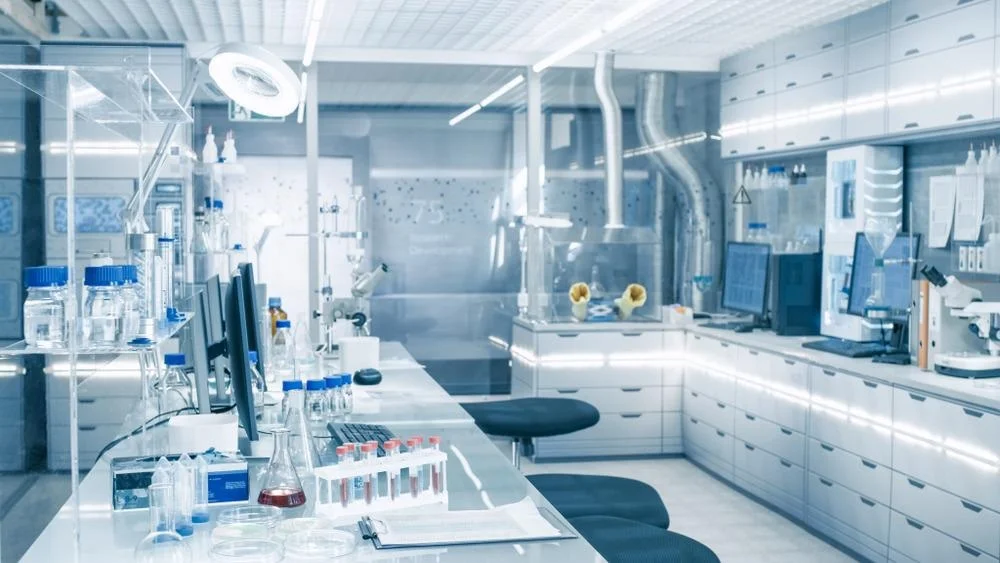EN 13501 Organic Compound Flammability Testing in Materials
The EN 13501 standard specifies methods for determining the flammability characteristics of organic compounds within materials used in construction. This testing is critical in ensuring that building products and materials meet stringent safety requirements, particularly in environments where fire resistance is paramount.
EN 13501 outlines various tests to assess the combustibility properties of organic compounds including their ignition temperature, flame spread, and burning rate under controlled laboratory conditions. The results from these tests are essential for architects, engineers, and product developers to ensure that materials used in construction do not contribute significantly to fire risk.
The testing process involves subjecting specimens of the material to a series of standardized procedures designed to replicate real-world scenarios where flammability is a concern. Specimens undergo testing across different parameters such as heat release rate, smoke production, and flame spread behavior.
One key aspect of this standard is its focus on reducing the risk of fire spreading through organic compounds used in building materials. The tests help identify materials that might ignite easily or contribute to rapid fire growth if exposed to ignition sources. This knowledge is crucial for specifying safe and reliable construction products.
The methodologies described in EN 13501 are designed to be rigorous, ensuring accurate and repeatable results. Compliance with these standards can provide a competitive edge by demonstrating a commitment to safety and regulatory compliance. For quality managers and R&D engineers involved in material development, understanding the nuances of this standard is vital for producing compliant products.
Testing laboratories specializing in EN 13501 are equipped with specialized equipment capable of replicating the conditions under which materials may encounter fire hazards. This includes furnaces and other apparatus that simulate real-world scenarios accurately.
The results from these tests can influence not only compliance but also market positioning by highlighting the safety credentials of a product. For procurement teams, knowing the flammability characteristics of a material is crucial for making informed decisions about which suppliers to engage with and what products to specify.
Industry Applications
| Application | Description |
|---|---|
| BUILDING MATERIALS | Testing the flammability of organic compounds used in insulation, coatings, and other building materials to ensure they meet fire safety standards. |
| FURNITURE MANUFACTURING | Evaluating the combustibility properties of wood-based composite panels and fabrics used in furniture to prevent rapid fire spread. |
| INDUSTRIAL EQUIPMENT | Assessing the flammability characteristics of polymers and other organic compounds used in manufacturing processes that could be exposed to heat or open flames. |
| SPECIALTY CHEMICALS | Determining the ignition temperatures and flame spread behavior of specialty chemicals like adhesives, sealants, and coatings for safe use in various industrial applications. |
These tests are integral to ensuring that materials used across various industries comply with fire safety regulations. By conducting EN 13501 testing, manufacturers can mitigate risks associated with the use of flammable organic compounds and enhance product safety.
Environmental and Sustainability Contributions
- Reducing Fire Hazards: Ensuring that materials used in construction do not contribute to rapid fire spread helps prevent fires, which is a significant environmental hazard.
- Safety Improvements: By identifying the flammability characteristics of organic compounds early in the design and development process, manufacturers can reduce the risk of accidents and injuries associated with fire incidents.
- Innovation in Sustainable Materials: Understanding the combustibility properties of materials allows for the development of safer alternatives that contribute positively to environmental sustainability.
Compliance with EN 13501 not only enhances safety but also supports broader sustainability goals by promoting the use of less flammable and more sustainable building materials. This can lead to reduced carbon footprints and improved air quality, contributing positively to the environment.
Competitive Advantage and Market Impact
Meeting the stringent requirements set forth in EN 13501 provides a significant competitive advantage by demonstrating a commitment to safety and regulatory compliance. This can enhance market positioning and brand reputation, making products more attractive to customers who prioritize fire safety.
For quality managers, ensuring that all materials used meet these standards is crucial for maintaining high product quality and consistency. R&D engineers can leverage the insights gained from EN 13501 testing to innovate safer and more sustainable products.
Compliance with this standard also opens up opportunities for international trade by meeting regulatory requirements in countries where fire safety regulations are stringent. This is particularly important for manufacturers operating globally, as it ensures that their products meet the highest standards across different regions.





